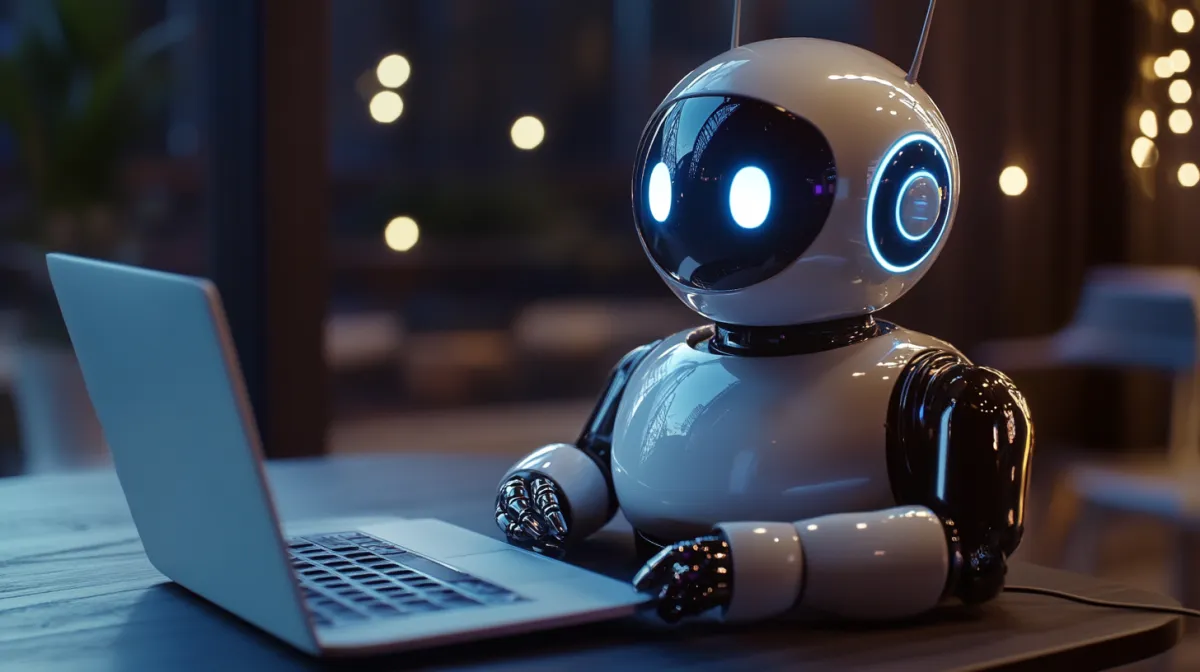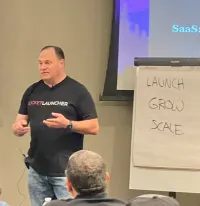
Read Our Blogs!

The Future Is Here: How AI-Powered Chatbots Are Revolutionizing Customer Engagement
The Future Is Here: How AI-Powered Chatbots Are Revolutionizing Customer Engagement
INTRODUCTION
As I sit here, marveling at the rapid advancements in technology, I can't help but feel a surge of excitement about the future of customer engagement. We're standing on the brink of a revolution, and I'm thrilled to share with you the game-changing developments that are reshaping the way businesses interact with their customers.
In this article, I'll take you on a journey through the world of AI-powered chatbots and how they're transforming customer relationships. We'll explore the enhanced capabilities that are pushing the boundaries of what's possible, and I'll show you how these innovations can benefit your business in ways you might not have imagined.
KEY TAKEAWAYS
Before we dive deep into the details, let's quickly highlight the main points we'll be covering:
1. AI-powered chatbots now have expanded functionality beyond simple interactions.
2. New AI functions enable chatbots to send texts and perform various CRM tasks.
3. These advancements allow for seamless communication across multiple channels.
4. AI-driven chatbots can more effectively engage prospects, manage customer relationships, and drive conversions.
5. Personalized and timely interactions are now possible through AI-powered chatbots.
6. Businesses can reach audiences through their preferred channels, fostering deeper engagement.
7. AI helps navigate the complexities of modern customer interactions.
THE EVOLUTION OF CHATBOTS: FROM SIMPLE TO SOPHISTICATED
When chatbots first appeared on the scene, they were little more than glorified FAQ machines. Sure, they could answer basic questions and point users in the right direction, but their capabilities were limited. As someone who's been in the tech industry for years, I remember the frustration of trying to get anything more than a canned response from these early chatbots.
But oh, how times have changed! The chatbots of today are a far cry from their predecessors. Thanks to rapid advancements in artificial intelligence and machine learning, we're now seeing chatbots that can engage in complex conversations, understand context, and even anticipate user needs.
What excites me most about this evolution is the potential it unlocks for businesses of all sizes. No longer are sophisticated customer engagement tools the exclusive domain of large corporations with deep pockets. Now, even small businesses can harness the power of AI to provide top-notch customer experiences that rival those of industry giants.
BREAKING BARRIERS: AI FUNCTIONS THAT GO BEYOND CHAT
Now, let's talk about the real game-changer: the new AI functions that are taking chatbots to the next level. These aren't just incremental improvements; they're quantum leaps that are redefining what's possible in the realm of customer engagement.
One of the most exciting developments is the ability for chatbots to send texts. Think about it – how many times have you wished you could reach out to a customer or prospect via text, but didn't have the time or resources to do it manually? With AI-powered chatbots, that's now a reality. These intelligent assistants can craft personalized text messages, schedule them for optimal times, and even respond to replies, all without human intervention.
But it doesn't stop there. These advanced chatbots can now perform a wide array of CRM tasks. From updating customer records to scheduling follow-up calls, they're becoming indispensable allies in managing customer relationships.
THE POWER OF OMNICHANNEL COMMUNICATION
In today's hyper-connected world, customers expect to be able to reach businesses through their preferred channels, whether that's email, social media, messaging apps, or good old-fashioned phone calls. Meeting this expectation can be a logistical nightmare for businesses – or at least, it used to be.
Enter AI-powered chatbots with omnichannel capabilities. These digital wizards can seamlessly switch between different communication channels, maintaining context and continuity throughout the customer journey. It's like having a personal concierge for each of your customers, available 24/7 across all platforms.
I remember working with a client who was struggling to manage customer inquiries across multiple channels. We implemented an AI chatbot with omnichannel capabilities, and the results were astounding. Not only did response times plummet, but customer satisfaction scores soared.
DRIVING ENGAGEMENT AND CONVERSIONS WITH AI
At the end of the day, businesses need to see results. And that's where AI-powered chatbots really shine. By leveraging advanced algorithms and machine learning, these chatbots can analyze customer data in real-time, identifying opportunities for engagement and conversion that a human might miss.
Imagine a chatbot that can detect when a prospect is showing signs of interest and automatically offer a personalized promotion or schedule a call with a sales representative. Or a chatbot that can sense when a customer is frustrated and escalate the issue to a human agent before it turns into a negative review. These aren't futuristic scenarios – they're happening right now, and they're driving real business results.
I've seen companies double their conversion rates and significantly increase customer lifetime value by implementing AI-driven engagement strategies. The key is in the chatbot's ability to provide timely, relevant interactions that feel personal and valuable to the customer.
PERSONALIZATION AT SCALE: THE HOLY GRAIL OF CUSTOMER ENGAGEMENT
We all know that personalization is crucial in today's market. Customers expect experiences tailored to their unique needs and preferences. But delivering personalization at scale has always been a challenge – until now.
AI-powered chatbots are making it possible to provide deeply personalized experiences to every customer, no matter how large your customer base grows. By analyzing vast amounts of data – from past purchases to browsing behavior to social media activity – these chatbots can create detailed customer profiles and use them to tailor every interaction.
NAVIGATING THE COMPLEXITIES OF MODERN CUSTOMER INTERACTIONS
Let's face it – customer interactions today are more complex than ever before. With multiple touchpoints, varying customer expectations, and the need for instant gratification, it's easy for businesses to feel overwhelmed. This is where AI truly shines.
AI-powered chatbots act as a central hub, coordinating and managing customer interactions across all channels. They can handle routine inquiries, route complex issues to the right department, and even proactively reach out to customers with relevant information or offers.
What impresses me most is the chatbot's ability to learn and improve over time. As they interact with more customers, they become smarter and more efficient, continuously refining their responses and strategies. It's like having a customer service team that never sleeps and gets better every single day.
THE HUMAN TOUCH: BALANCING AI AND HUMAN INTERACTION
Now, I know what some of you might be thinking: "Won't this make customer service feel robotic and impersonal?" It's a valid concern, and one that I've heard many times. But here's the thing – when implemented correctly, AI-powered chatbots actually enhance the human element of customer service rather than replace it.
By handling routine tasks and inquiries, chatbots free up human agents to focus on complex issues that require empathy, creativity, and critical thinking. Moreover, advanced AI can detect when a customer needs human intervention and seamlessly transfer the conversation to a live agent.
I've seen this hybrid approach work wonders for businesses. One company I worked with saw their customer satisfaction scores increase by 25% after implementing an AI chatbot that worked in tandem with their human support team. The key was finding the right balance – using AI for efficiency and scale, while leveraging human skills for nuanced, high-touch interactions.
CONCLUSION
As we wrap up this exploration of AI-powered chatbots and their impact on customer engagement, I hope you're feeling as excited as I am about the possibilities. We're witnessing a transformation that's making personalized, efficient, and effective customer interactions accessible to businesses of all sizes.
From expanded functionality and omnichannel communication to personalization at scale and seamless integration with human teams, AI-powered chatbots are revolutionizing the way businesses connect with their customers. They're not just tools – they're partners in creating exceptional customer experiences.
As you consider implementing these technologies in your own business, remember that the goal isn't to replace human interaction, but to enhance it. Use AI to handle the routine, the repetitive, and the data-intensive tasks, freeing your human team to focus on what they do best – building genuine connections and solving complex problems.
The future of customer engagement is here, and it's powered by AI. Are you ready to embrace it?
FAQ SECTION
Q1: Are AI-powered chatbots difficult to implement?
A1: While implementing AI-powered chatbots does require some technical expertise, many platforms now offer user-friendly interfaces that make the process much easier. The key is to start small, focus on specific use cases, and gradually expand the chatbot's capabilities.
Q2: How can AI-powered chatbots improve customer satisfaction?
A2: AI-powered chatbots can improve customer satisfaction by providing instant, 24/7 support, offering personalized recommendations, reducing wait times, ensuring consistent responses across all channels, and proactively addressing potential issues.
Q3: Will AI chatbots replace human customer service agents?
A3: No, AI chatbots are meant to complement human efforts by handling routine tasks, allowing human agents to focus on more complex issues that require empathy and critical thinking.
Q4: Can small businesses benefit from AI-powered chatbots?
A4: Absolutely! Small businesses can use AI-powered chatbots to provide 24/7 customer support, handle increased inquiries without hiring additional staff, and compete with larger companies in terms of customer experience.
Q5: What kind of ROI can businesses expect from implementing AI-powered chatbots?
A5: While ROI can vary, many businesses report reduced customer service costs, increased sales conversions, improved customer satisfaction scores, and higher customer retention rates. It's important to set clear goals and metrics to accurately measure impact.
